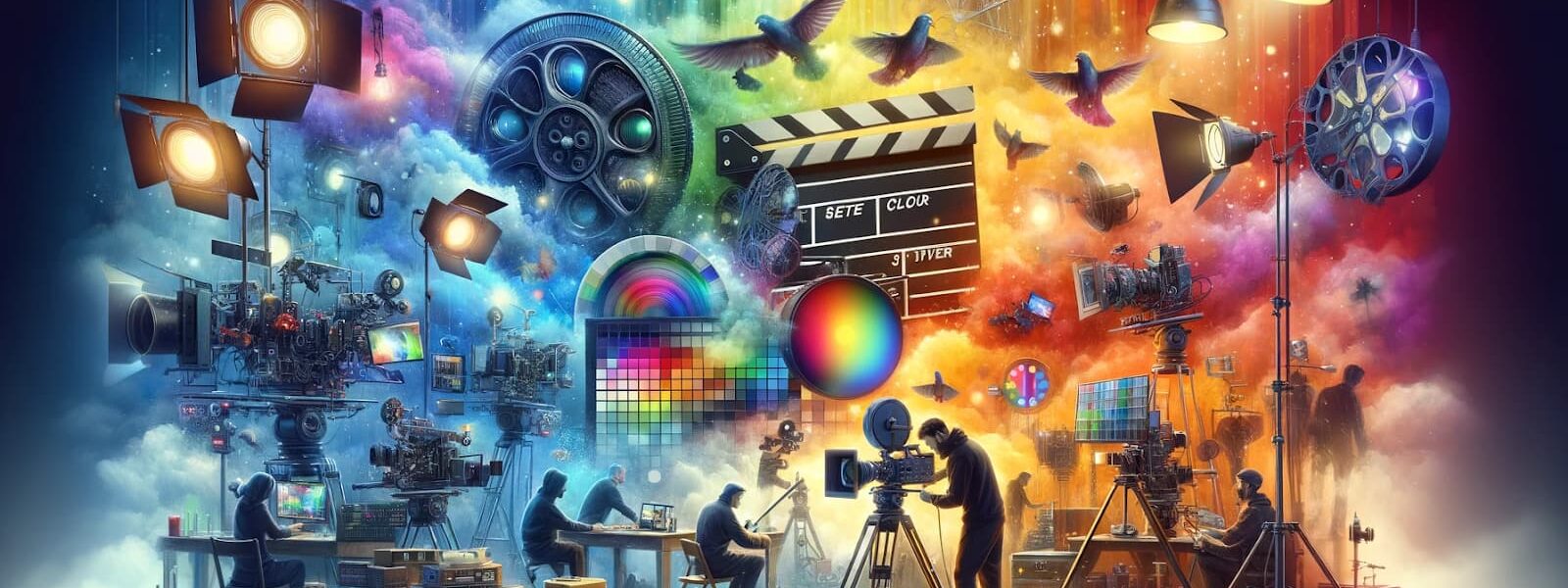The craft of filmmaking is a difficult and multifaceted one in which every step is essential to the overall narrative. Among these, cinematography is particularly noteworthy for how well it uses colour to enhance storylines and elicit feelings. This essay explores how cinematographers utilise colour control as a potent tool to shape our film experiences, delving into the art of filmmaking via this viewpoint.
The Psychology of Color
In cinematography, colour psychology is essential since it can be utilised to manipulate audience perception and emotion by employing different colours. Every hue has a unique meaning that influences how an observer feels and thinks about a scene. For example, blue can evoke a sense of tranquilly or, conversely, melancholy depending on the situation, while red is frequently used to indicate danger or passion, eliciting passionate feelings. With its vibrant and vivacious hue, yellow can stand for both happiness and anxiety depending on the context. A film’s thematic and emotional depth can be enhanced by the careful selection and blending of colours by cinematographers, who possess a profound awareness of these colour associations. They are able to gently direct the viewer’s emotional journey through the story because to their purposeful use of colour.
Color Theory in Cinematography
Beyond the confines of basic psychology, colour theory is applied in cinematography and plays a crucial part in visual narrative. Understanding the dynamics of complimentary (colours that are opposite each other on the colour wheel) and analogous (colours that are close to each other on the colour wheel) colours is crucial for this kind of strategic use of the colour wheel. Cinematographers can produce scenes that are visually captivating and captivating by using this information. Using colour contrasts to heighten a scene’s emotional and narrative effect is a crucial component of this
Lighting and Color
Cinematography relies heavily on lighting to manipulate colour, and lighting has a profound effect on how colours appear on screen. Cinematographers skillfully employ a variety of lighting techniques to create particular moods and visual effects:
- Natural lighting provides a spectrum of tones from the warmer, golden hues of sunrise and sunset to the colder, bluish tones of midday and moonlit evenings. It is achieved by employing sunlight or moonlight. The “golden hour,” which occurs shortly after sunrise or just before sunset, is especially prized for its warm, mellow lighting that accentuates colour brightness and gives settings a sentimental, peaceful feel.
- All man-made lighting, from studio lights to functional lights used in a scene, is referred to as artificial lighting. Cinematographers can accurately regulate the intensity and temperature of colour, which helps them shape the mood and colour scheme of the picture.
- High-Key Lighting: Known for its low contrast and brightness, high-key lighting softens sharp shadows and is frequently utilised in settings that call for a cheery, cheerful ambiance. It tends to soften and lessen the saturation of colours.
- Low-Key Lighting: This lighting technique evokes a sense of mystery or tension with its strong contrast and harsh shadows. It frequently produces deeper, more saturated colours, which are perfect for dramatic or scary scenes.
Cinematographers can enhance a film’s narrative and emotional depth by quietly or drastically altering the appearance and impact of colours through a variety of lighting techniques.
Color Grading in Post-Production
The critical post-production stage of colour grading is when the movie’s visual tone is adjusted and polished. Cinematographers and colorists can now carefully modify hues, saturation, contrast, brightness, and other features of the film’s colour palette thanks to this procedure. Colour grading is an essential technique for storytelling because it allows one to drastically change the tone and ambiance of a scene. Colour grading, for example, can be used to alter the perceived time of day, transforming a scene from dawn to dusk, or to alter the weather, adding to the realism or surrealism of a scene. These changes are more than just stylistic; they are essential in determining the story’s emotional tone, bolstering its narrative, and affecting the viewer’s emotional reaction. Colour grading’s strength and subtlety come from its ability to change the visual story, which makes it a crucial step in the filmmaking process.
Color in Genre Films
A smart and artistic choice that plays a big part in creating the right mood and ambiance for each genre is the use of colour in genre movies. Different genres usually use particular colour schemes to elicit particular feelings and ideas:
- Horror films: Frequently use a monochrome or chilly colour scheme, primarily focusing on grey, blue, and muted tones. This decision heightens the suspense and sense of dread that are typical of the genre and contributes to the creepy, unpleasant mood.
- Brighter, more vivid, and more saturated colours are typically used in romantic comedies. The feelings of warmth, joy, and lightness that these colours evoke are in line with the themes of humour, love, and happy endings found throughout the genre.
- Bold and vibrant colour palettes are common in action and adventure films. The impression of pleasure, excitement, and energy are enhanced by the use of strong, contrasting colours.
- Dramas: Usually choose more muted tones and natural colours in more realistic palettes. This aids in setting the tale’s emotional and narrative depth and bringing the story closer to reality.
- Science fiction and fantasy: Depending on the setting and concept of the film, these genres may use a broad range of colour schemes, from the stark, future monotones to the rich, brilliant hues of fanciful realms.
Cultural Significance of Colors
Cinematographers must take into account the cultural meaning of colours, particularly in the increasingly globalised film business. Colours have various connotations and feelings in different cultures, which can have a big impact on how diverse audiences interpret and react to a movie. For instance, white is a colour of celebration and joy since it is typically connected to purity, innocence, and weddings in many Western cultures. But white, which symbolises loss and memory, is the colour of mourning in many Eastern cultures, and it is worn at funerals. The vast differences in how different cultures see colour call for careful cinematography. Films meant for a worldwide audience require a grasp of these cultural quirks. Depending on the situation, using or omitting specific colours can either increase the film’s broad appeal or, if done carelessly, cause misunderstandings or unintentional meanings.



